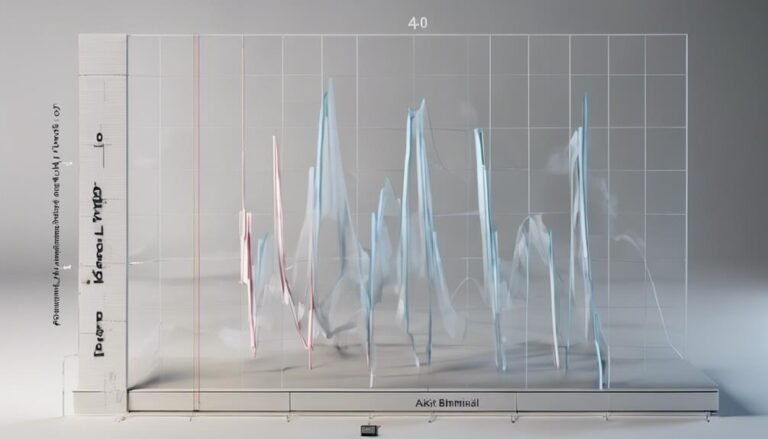Dutch Auction: Understanding How It’s Used in Public Offerings
Dutch auctions in public offerings employ a descending price format, allowing bidders to strategically place bids as the price decreases. This method fosters market efficiency, enhances investor participation, and offers a transparent environment for price discovery. Different auction styles like English, Sealed-Bid, Vickrey, and Reverse Auctions provide varying dynamics. While democratizing public offerings, Dutch auctions may lead to price volatility and require strong risk management strategies. With a pivotal role in initial public offerings, they promote broad investor participation, transparent price-setting, and equitable share allocation. Understanding these mechanisms is crucial for navigating the complexities of auction dynamics.
Key Takeaways
- Facilitates broader investor participation in public offerings.
- Transparent price discovery based on market demand.
- Equitable allocation of shares among investors.
- Influences IPO dynamics through price-setting mechanism.
- Offers a competitive and inclusive environment for public offerings.
Dutch Auction Mechanics
The mechanics of a Dutch auction involve a descending price format where the initial price is set high and progressively decreases until a bid is accepted, determining the final price for the offering. Understanding the dynamics of strategic bidding is important in Dutch auctions. Bidders strategically place their bids, considering the decreasing price and competition from other participants.
The auctioneer continuously lowers the price until a bid matches the current asking price, leading to price discovery through market demand. Strategic bidding in Dutch auctions requires bidders to assess the value of the offering and anticipate the best time to place their bid to secure the most favorable price. This process fosters an environment where price determination is influenced by participants' bidding strategies, adding complexity to the auction dynamics.
Practical Applications in Finance
With its versatile nature and adaptability to various financial contexts, Dutch auctions have found practical applications in enhancing market efficiency and fostering broader investor participation in the domain of finance.
In the field of investment strategies, Dutch auctions offer a unique mechanism for price discovery, allowing participants to submit competitive bids based on their valuation of the asset being auctioned. This process aligns with market dynamics by creating a transparent and competitive environment where prices are determined by the collective actions of bidders.
Additionally, Dutch auctions facilitate a more inclusive approach to public offerings, enabling a wider range of investors to participate and potentially acquire securities at fair market prices, thereby contributing to a more efficient and accessible financial market landscape.
Varieties of Auction Formats
Amidst the dynamic landscape of auctions, exploring the diverse array of auction formats provides insight into the nuanced mechanisms shaping market transactions. When comparing auction styles and conducting auction strategy analysis, it is imperative to take into account the following:
- English Auction:
- Bidders openly compete with increasing bids until no higher bid is offered.
- Sealed-Bid Auction:
- Bidders submit their bids privately, and the highest bidder wins.
- Vickrey Auction:
- Bidders submit sealed bids, and the winner is the highest bidder but pays the second-highest bid.
- Reverse Auction:
- Sellers compete to obtain business from the buyer, with prices decreasing until a bid is accepted.
Evaluating Pros and Cons
When assessing the benefits and drawbacks of Dutch auctions, it is important to consider the democratization of public offerings and the potential impact on price setting mechanisms.
Dutch auctions offer benefits such as democratizing public offerings, enabling small investors to participate, and increasing transparency in price setting through bids from various investors. This can provide unique insights into market dynamics and investor perspectives.
However, drawbacks include less price control compared to traditional methods, potential price volatility due to the winner's curse, and the need for robust risk management strategies to navigate uncertainties.
Price discovery in Dutch auctions relies on the competitive bidding process, which can affect risk management approaches and overall market stability.
Relationship With Initial Public Offerings
In the domain of financial markets, Dutch auctions play a pivotal role in shaping the dynamics of Initial Public Offerings (IPOs).
- Investor Participation: Dutch auctions in IPOs allow for broader participation from individual investors, democratizing the process compared to traditional IPOs led by investment banks.
- Market Dynamics: The use of Dutch auctions in IPOs can lead to a more transparent price-setting mechanism, influenced directly by investor demand.
- Price Discovery: Through Dutch auctions, the final price is determined based on the bids submitted by investors, reflecting market sentiment and demand.
- Equitable Allocation: Dutch auctions allocate shares starting from the highest bidders down, promoting fairness in the distribution of shares in an IPO.
Conclusion
To sum up, Dutch auctions play a vital role in public offerings by promoting price discovery and market efficiency.
One interesting statistic to note is that between 2003 and 2012, Dutch auctions were used in 17% of IPOs in the United States, highlighting their significance in the financial landscape.
Understanding the mechanics and implications of Dutch auctions is essential for investors navigating the complexities of the financial markets.






